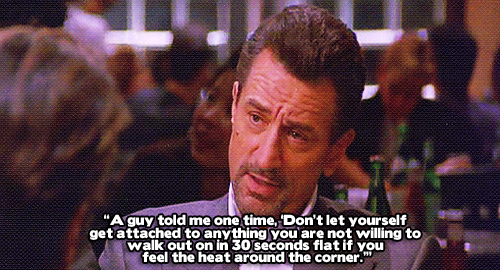

A cloud of negatively charged electrons surrounds the nucleus, the number of electrons equaling the number of protons thus balancing the positive charge of the protons for a neutral atom.

A simple model of the atom has a central nucleus composed of protons, which have positive charges, and neutrons which have no charge. Atoms consists of subatomic particles- protons, neutrons, and electrons.

3.1.1 The Atom Electron cloud model of the atom To understand mineral chemistry, it is essential to examine the fundamental unit of all matter, the atom. Rocks are composed of minerals that have a specific chemical composition. As is discussed in later chapters, there are three types of rocks composed of minerals: igneous (rocks crystallizing from molten material), sedimentary (rocks composed of products of mechanical weathering (sand, gravel, etc.) and chemical weathering (things precipitated from solution), and metamorphic (rocks produced by alteration of other rocks by heat and pressure. Typically, substances like coal, pearl, opal, or obsidian that do not fit the definition of mineral are called mineraloids.Ī rock is a substance that contains one or more minerals or mineraloids. But once that clam shell undergoes burial, diagenesis, or other geological processes, then the calcite is considered a mineral. Because of these discrepancies, the International Mineralogical Association in 1985 amended the definition to: “A mineral is an element or chemical compound that is normally crystalline and that has been formed as a result of geological processes.” This means that the calcite in the shell of a clam is not considered a mineral. Calcite is quite often formed by organic processes, but is considered a mineral because it is widely found and geologically important. Both are considered minerals because they were classified before the room-temperature rule was accepted as part of the definition. For example, water and mercury are liquid at room temperature. Some natural substances technically should not be considered minerals, but are included by exception. In geology, the classic definition of a mineral is: 1) naturally occurring, 2) inorganic, 3) solid at room temperature, 4) regular crystal structure, and 5) defined chemical composition. The term “minerals” as used in nutrition labels and pharmaceutical products is not the same as a mineral in a geological sense. Identify minerals using physical properties and identification tables.List common non-silicate minerals in oxide, sulfide, sulfate, and carbonate groups.Describe the silicon-oxygen tetrahedron and how it forms common silicate minerals.Describe chemical bonding related to minerals.Derive basic atomic information from the Periodic Table of Elements.Describe the basic structure of the atom.The largest crystal found here is 39 feet (12 meters) and 55 tones.Īt the end of this chapter, students should be able to: “Don’t make me put the cat down and punch you.These selenite (gypsum) crystals, found in The Cave of the Crystals in Naica, Mexico, has some of the largest minerals ever found. “What am I gonna do, shoot you in the dick?” To a different brother’s girlfriend: “Who the fuck are you? I’m going to kill you and then strangle her with your dead body!” “I feel the need for you to stay out of my business so I don’t punch you in the teeth.”Ībout brother’s girlfriend: “Tell Gina I’m going to strangle her at the table.” “I’ll get comfy when my foot is up your ass.” When somebody eventually finds her boss’s balls, she volunteers to “put them right back up his scrotum.” “I’m gonna hit you and knock all your little buttons off.” I’ll slam this door 157,000 times on your head.” “I’ve been thinking of ways to kill you for the last half hour.” “I’m gonna make you bend over, and then I am going to reach up into your pocket and get the keys to your house and then I am gonna drive over and kill you in your sleep.” ( Spoilers for those who like their four-letter-worded dialogue to be a surprise.) Who knew there were so many different ways to suggest that you are going to pull off someone’s body part and stuff it in another body part? We jotted down all of her major threats (ignoring generic “fuck-you”s) so you can memorize them and use them when your wordier Veep-spawned insults get too exhausting. detective Shannon Mullins in The Heat, Melissa McCarthy is good at police work, and even better at hurling profanity-spattered insults. Photo: Gemma La Mana/Twentieth Century FoxĪs Boston P.D.


 0 kommentar(er)
0 kommentar(er)
